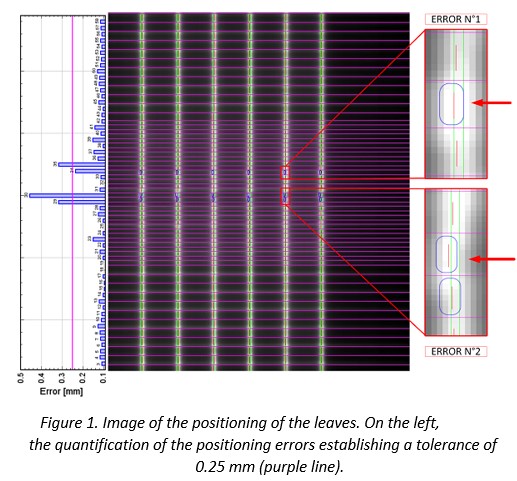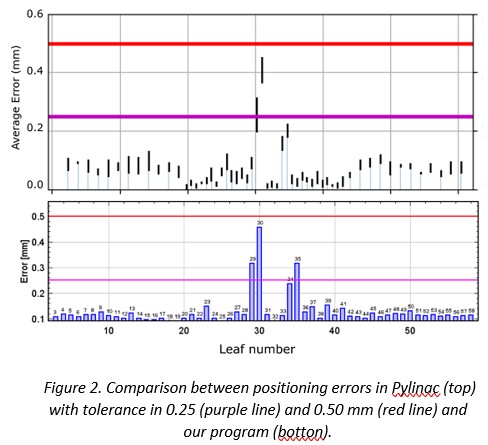Automation of the Picket Fence quality control test through digital image processing
PO-1618
Abstract
Automation of the Picket Fence quality control test through digital image processing
Authors: Jorge Alonso Muriedas1, Mario Annier González2, Marina Gutiérrez Ruiz1, Rodrigo Astudillo Olalla1, Rosa Fabregat Borras1, Fernando Gómez Enriquez1, Diego Bruzos López1, Guillermo Camacho de la Vega1, Ana Reguilón Martín1, Javier Albendea Roch1, Frandeina Pinto Guevara1, Mara García Lamela1, Samuel Ruiz Arrebola1
1Hospital Universitario Marqués de Valdecilla, Radiotherapy, Santander, Spain; 2Universidad de Cantabria, Computacion, Santander, Spain
Show Affiliations
Hide Affiliations
Purpose or Objective
Picket Fence Test is one of the tests performed during the quality controls of the LINACs in radiotherapy to evaluate the accuracy and repeatability of the positioning of the leaves in the multileaf colimator system (MLC), that allows the shaping of the accelerator output beam. The test consists of introducing intentional erroneous displacements in two leaves, which are detected with visual inspection of the image resulting from the detection of the irradiation pattern. State-of-the-art software that can digitally process these errors such as Pylinac or MLC QA are complex and incompatible with most hospital computing environment.
The goal of the work was to create a program to automatically detect and quantify the introduced errors without visual human dependence.
Material and Methods
The analyzed images were obtained in 2020, 2021 and 2022 on the Varian TrueBeam® STx model linac, installed at our hospital and equipped with an MLC 120HD system. The leaves of the MLC are moved horizontally, creating a separation between them of 1 mm every 2.0 cm, in six movements. During the irradiation, two leaves have an intentional displacement respect to the rest of 0.5 mm and 0.25 mm, respectively. An image is generated with a pattern of clear lines corresponding to the displacements, perpendicular to the direction of the leaves.
After morphological filtering and enhancement processing removed random noise, the intensity values of the leaves and displacement were approximated to a Gaussian, finding full width at half maximum center. The deviation of this center from the vertical mean line is considered an error above a certain tolerance value. The procedure determined the difference between the center of the gaps and their average along the lines marked by the horizontal displacements.
All operations were implemented using the free image analyzing software Fiji/ImageJ. For the validation purposes, the Python library for medical image analysis of linear accelerators, Pylinac, was used.
Results
Figure 1 shows the image of the different positions of the leaves and the gaps between them, as well as the detection of incorrect positions and their errors. Three leaves exceed the tolerance (established in 0.25 mm).

Figure 2 shows a comparison with the Pylinac where similar results are observed. For errors bellow 0.25 mm, Pylinac is less accurate. It is also observed that it detects errors in neighboring leaves of a real error due to the extent of the irradiation pattern.

Conclusion
The results of this work showed the effectiveness of a proposed method for detecting and quantifying automatically the displacements of the leaves in the Picket Fence Test using free software Fiji/ImageJ.